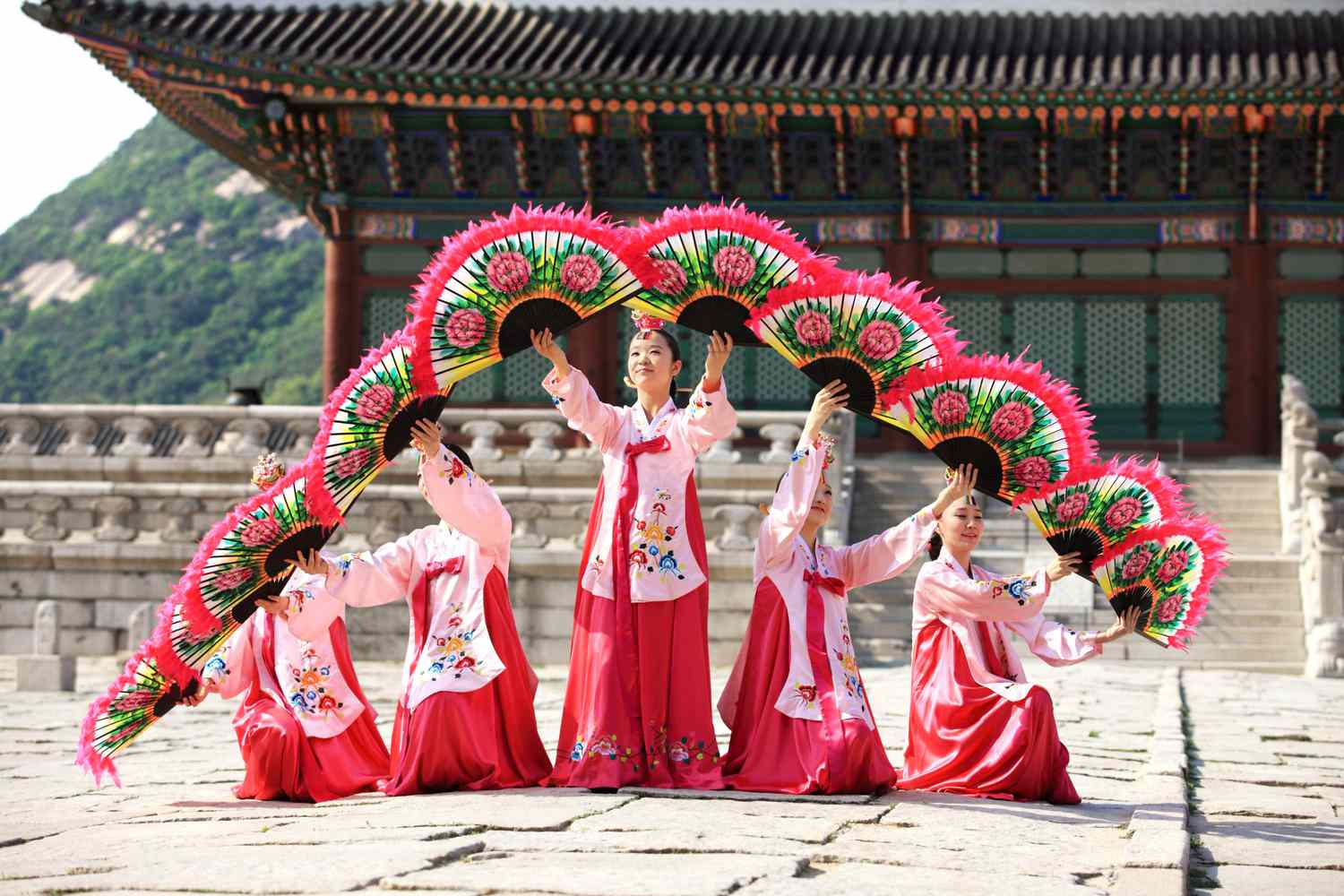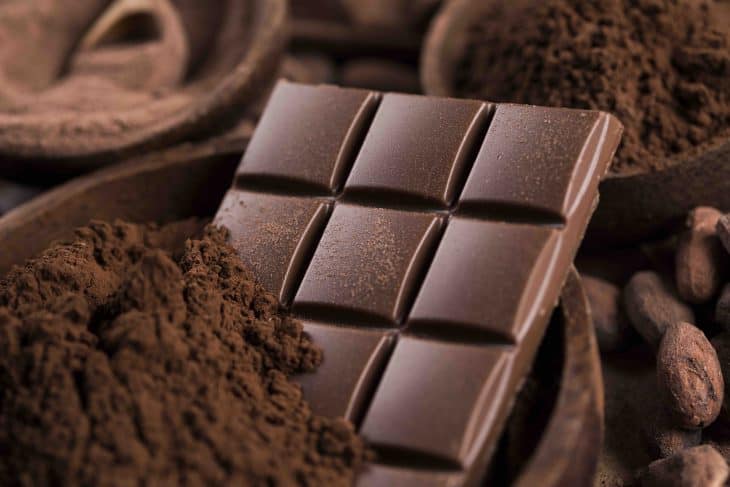
Chocolate has a long and impressive history. Its beginning can be traced to ancient Mesoamerica, which is now called Mexico. Did you know that Mayans and Aztecs were the first ones to use and introduce chocolates to the world? They used chocolates in different things such as rituals, ceremonies, and currency. Aren’t those amazing chocolate facts?
Nowadays, chocolate is an all-time favorite dessert. There is no food quite as comfort-packed as it. Chocolate is a wonderful treat for young and old alike. People in America love chocolate so much that they spend $10 billion annually on chocolatey treats like chocolate bars, chocolate ice cream, chocolate chip cookies, and chocolate cupcakes.
People see chocolate as a form of sinful pleasure. This is because too much of it can lead to weight gain and diseases like diabetes. On other hand, several reports have shown that chocolate has numerous health benefits as well. It puts you in a better mood, helps reduce stress, and helps you produce more endorphins. Endorphins, brain hormones released by the body, play a key role in preventing depression and other mental disorders.
Popular as it may be, there is still a lot we don’t know about chocolate. So why don’t we altogether get to know it a little bit better? Whether you’ve got a sweet tooth or not, we are sure you’ll enjoy our collection of 120 of the best chocolate facts.
- There are 3 main types of chocolate.
- Each year, Americans consume around 7 billion chocolate chips, and 50% of those are homemade.
- Chocolate is one of the most complex types of food, with hundreds of different compounds in it.
- The word chocolate became part of the English language in 1600.
- To produce a pound of chocolate, it will take approximately 400 cocoa beans.
- Chocolate is the most famous sweet treat in the world.
- Chocolates are from cacao seeds.
- It is used as a flavoring ingredient.
- Some people use chocolate in cold and hot drinks.
- Most desserts include chocolate.
- Many candies are filled with sweetened chocolate.
- Chocolate is sensitive to humidity and temperature.
- Chocolate can be in liquid, paste, or block form.
- Africa is the leading producer of cocoa.
- Chocolate is rich in carbohydrates.
- Spain was one of the earliest countries to include chocolate in its cuisine.
- Throughout its history, humans enjoy chocolate as a drink.
- A chocolatier (cho-co-la-tir) is a person or company that makes or sells chocolate.
- The word chocolate comes from the Spanish term “xocolātl.”
- Until the 16th century, no European has ever tasted a chocolate drink.
Maya people were the first to use chocolate.
The Maya people, an indigenous group from Mexico and Central America, were said to be the first to use chocolate. They used cacao to make chocolate and alcoholic drinks. They also used chocolate in religious rituals.
Aztecs adapted cacao in their culture.
In the 15th century, Aztecs, (a fierce tribe of warriors who settled in the Valley of Mexico), began to use cacao to make chocolate drinks. Unlike the Mayans who liked their chocolate drinks warm, Aztecs drank it cold, seasoned with other spices like chile, honey, and vanilla. The Aztecs were not able to grow cacao in their lands; they just imported it to their country.
Cocoa beans were used as currency.
Aztecs used cocoa beans as barter currency. They exchanged cocoa beans for food and clothes. For instance, Aztecs would use 100 cocoa beans to pay for a turkey or three beans for fresh avocado.
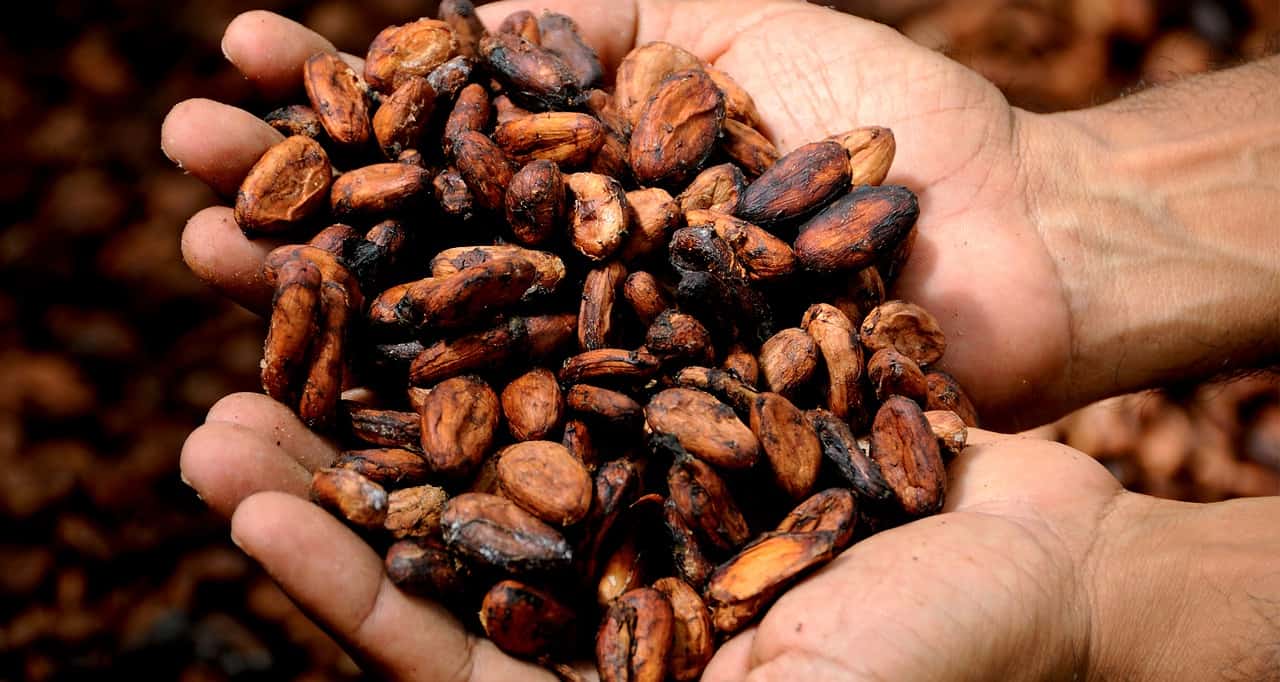
Montezuma II drank 50 cups of chocolate every day.
The ninth emperor of Mexico, Montezuma II, demanded cacao beans from people he conquered and drank chocolate drinks every day. He also allowed his military to drink it.
Christopher Columbus was one of the first Europeans to see cacao beans.
The Italian colonizer, Christopher Columbus, together with his son Ferdinand, encountered cacao seeds on Columbus’s journey to America. They seized a canoe containing cacao beans and other goods. While Columbus had taken cacao seeds to Spain, it didn’t make any impact, until Spanish priests introduced them as chocolate drinks.
Joseph Fry produced the first chocolate bar.
The English chocolate and confectionery manufacturer, Joseph Storrs Fry, was the first to introduce chocolate bars in 1847. He found a way to make molded chocolate using cocoa powder, melted butter, and sugar. Similarly, he was also the first to develop cream-filled chocolate sweets called cream sticks.
Chocolate requires complex procedures.
Once cocoa beans reached the chocolate factories, the procedure starts by roasting the dried cocoa beans. Next, they will heat and melt the cocoa beans and make them chocolate liquor. Finally, to add flavor, sugar, and milk will be mixed. After the blending process, the storage and molding of the liquid chocolate will begin.
Milk chocolate is the most widely distributed chocolate.
Milk chocolate, as the name implies, has milk added to it. The milk is usually in the form of liquid, powdered, or condensed milk. This type of chocolate has around 20% to 25% of cocoa and 12% milk. It is also creamier and softer than other chocolates.
Daniel Peter introduced the first milk chocolate.
The Swiss chocolatier, Daniel Peter, was the first to make milk chocolate in 1875 or 1876, by including powdered milk. When Peter thought of making milk chocolate, he had trouble separating water from milk. This caused fungus to form. After seven years, he was able to launch chocolate milk into the market.
Henri Nestlé and Daniel Peter founded Nestlé Company.
The German-born pharmacist, Henri Nestlé, began milk production in 1867 in Vevey, Switzerland. His first product was milk formula for mothers who can’t breastfeed. Nestlé mixed cow’s milk with sugar and grain to produce a replacement for breast milk.
Nestlé, who happened to be a neighbor and friend of Daniel Peter, offered his milk condensation process to Peter. The two men afterward formed a partnership, four years later. In 1879, Peter and Nestlé founded the Nestlé Company, which became one of the most popular chocolate manufacturers in the world.
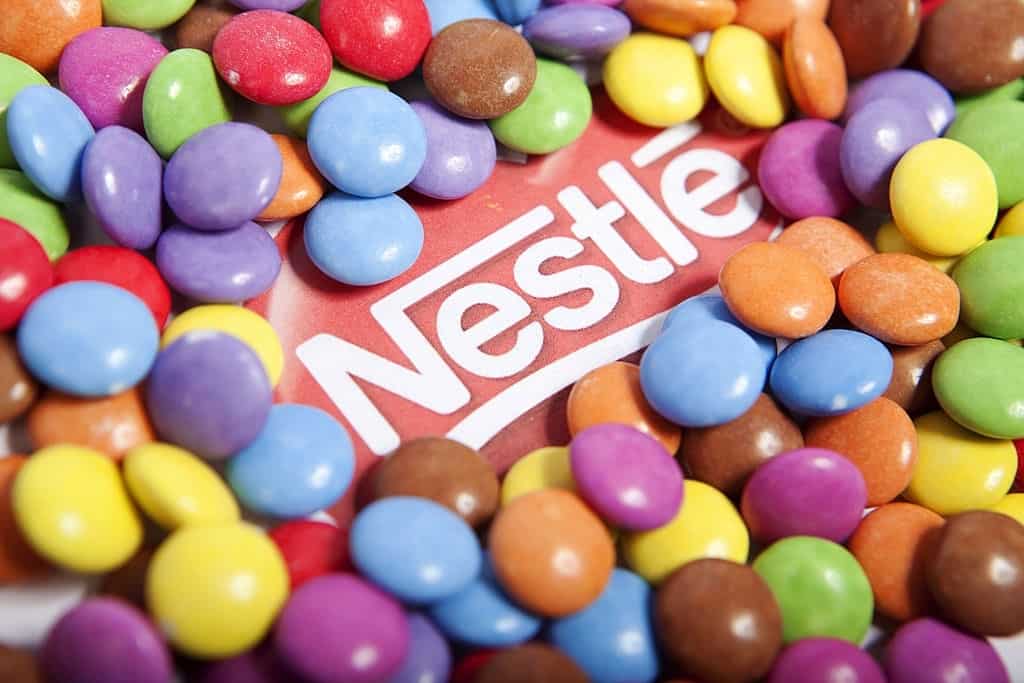
Nestlé is one of the largest chocolate manufacturers.
Nestlé is a Swiss multinational food and drinks producer situated in Vevey, Switzerland. It has branches in around 187 countries, with around 291,000 employees. At present, Nestlé chocolates are known for their great taste and provided satisfaction. Some of their famous chocolate products are Butterfinger, KitKat, Crunch, and Smarties.
Dark chocolate tastes the closest to cacao beans.
Regarded as “plain chocolate” in some regions, because fewer ingredients are included in it. Dark chocolate contains less sugar and more cacao than milk chocolate.
In fact, it is also considered healthier than other chocolate types. Moreover, it is a good source of antioxidants, can improve health, and lessens the risk of heart disease.
White chocolate is not chocolate.
White chocolate contains a significant amount of milk and sugar. It is a combination of cocoa butter (a fatty substance from cocoa beans), sugar, and vanilla. Though the primary ingredient of making white chocolate is cocoa beans, it doesn’t contain cocoa powder.
Unsweetened chocolate is pure chocolate.
Sometimes referred to as baking chocolate, this kind of chocolate is pure, and with no added sugar, and it is not good for eating. Moreso, unsweetened chocolate is one of the ingredients in making brownies, chocolate icing, fudge, and other recipes that have bitter chocolate flavor.
Cacao trees can live for 100 years.
The cacao tree’s scientific name is Theobroma cacao. Theobroma means “food for the gods.” In addition, it can live for around 100 years though it is only productive for approximately 60 years. Cacao trees bear fruits throughout the year. Its fruits take four to five months to grow, and several weeks to ripen.
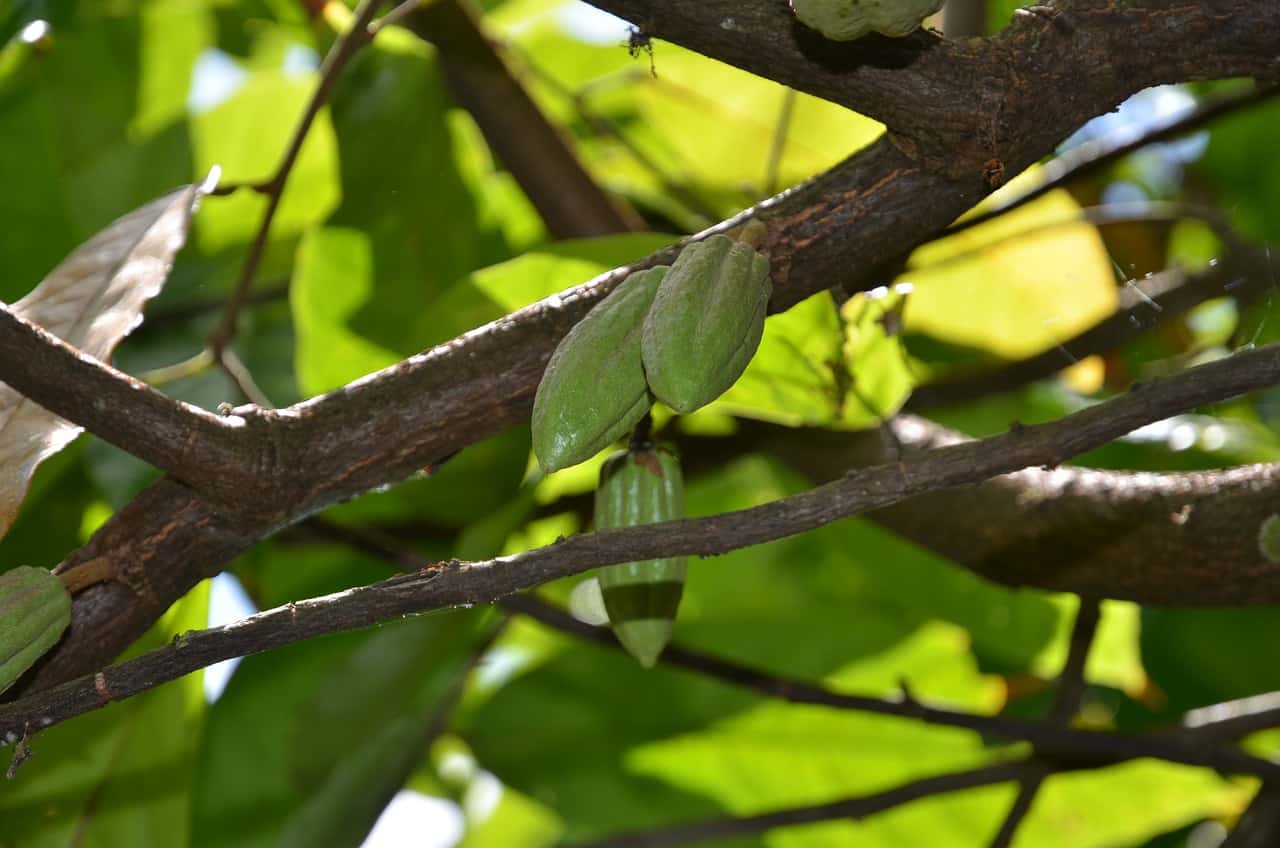
There are 3 variants of cacao seeds used to make chocolate.
The three most common types of cacao seeds are Forastero, Trinitario, and Criollo. Criollo is native to Central America, it’s the rarest and the most expensive. Forastero is the most common of all the cocoa seeds, it comes from America’s tropical forests. Trinitario is a hybrid of Criollo and Forastero that originated in Trinidad and Tobago.
Switzerland is the top consumer of chocolate worldwide.
A visit to Switzerland will not be complete if one will not try mouth-watering Swiss chocolates. Swiss people also love the chocolates manufactured in their country. In fact, Switzerland is the highest consumer of chocolate in the world, with 19.4 pounds of chocolate consumed by the Swiss yearly.
Lindt is one of the best chocolates in Switzerland.
The chocolatier and confectionery company founded in 1845, Chocoladefabriken Lindt & Sprüngli AG, or simply called Lindt, is famous for its chocolate truffles, bars, and other tasty sweets. They have around 410 chocolate shops and cafes globally. Moreover, they offer more than 20 flavors of chocolates.
Theodor Tobler produced Toblerone.
Toblerone is a popular chocolate bar owned by the US confectionery company, Mondelēz International, Inc. The owner of Mondelēz International, Inc, Theodor Tobler, together with his cousin Emil Baumann, created Toblerone in 1908.
They made an unusual recipe combining almonds, honey, nougat, and milk chocolate. Additionally, the name Toblerone came from Theodor’s surname, plus “torrone,” which is a type of nougat.
Toblerone has existed for over 100 years.
Toblerone, which comes in different flavors, has been around for more than 100 years. It has around 10 flavors including dark, filled, white chocolate, fruit, and nougat. This candy bar is available in 122 countries globally. Believe it or not, 62,000 kilometers of Toblerone are consumed annually.
Hershey's Kisses got its name from the kissing sound machine produced.
Hershey’s Kisses are bite-sized chocolate pieces known for their cone-shaped tops and flat bottoms. Hershey’s Company produced Hershey’s Kisses in 1907, and it was originally wrapped by hand. Later in 1921, the company used a machine to automatically wrap the candies. Thus, it is believed that Hershey’s Kisses got its name from the kissing sound of a machine.
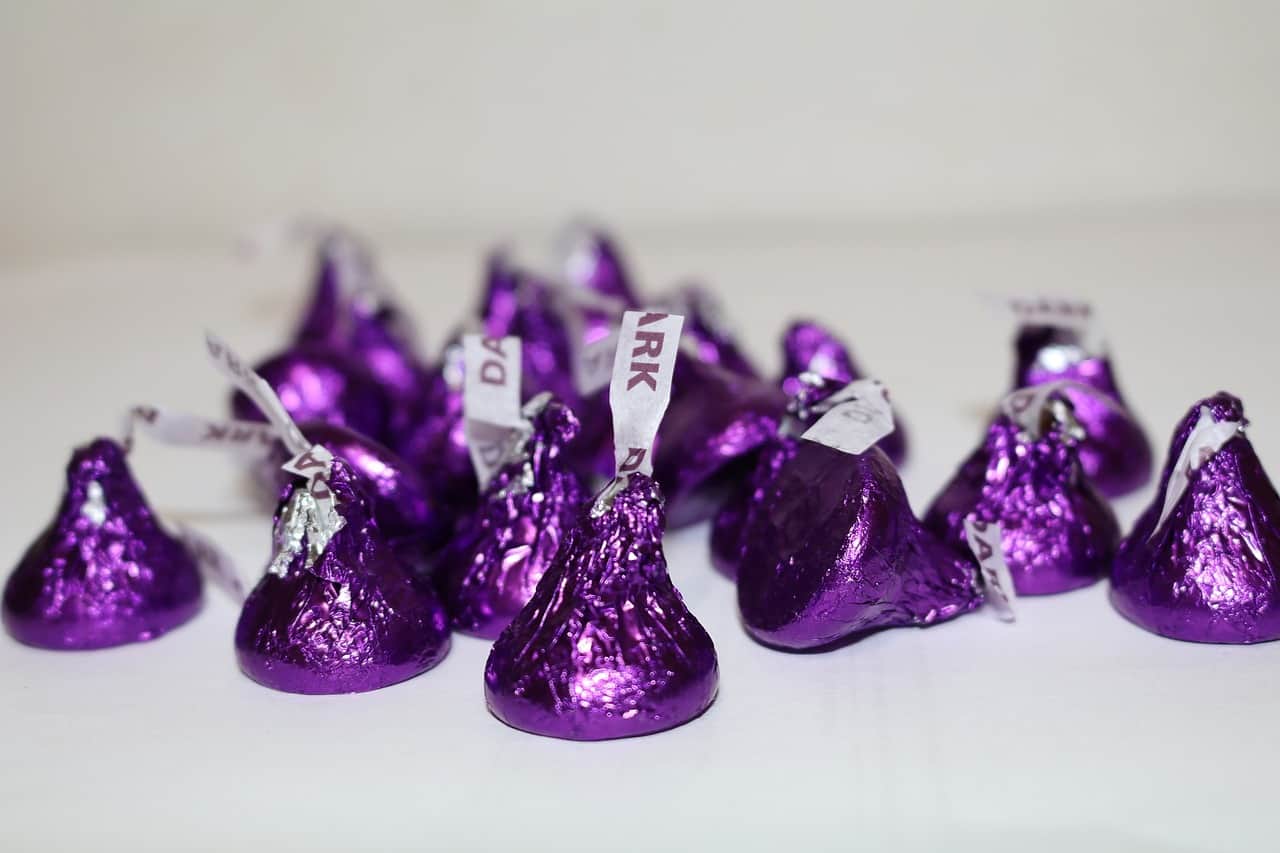
Hershey's produced around 70 million Kisses each day.
Hershey’s Kisses is one of the most popular chocolate candies in the United States. By 1989, it became the fifth most popular chocolate in the country, with a total sales of $400 million. The two manufacturing plants of Hershey’s in Pennsylvania produce more than 70 million candies daily.
Michele Ferrero developed Ferrero Rocher.
The Italian chocolatier and businessman, Michele Ferrero, introduced Ferrero Rocher in 1982, in Europe. According to some accounts, he named the chocolate after Rocher de Massabielle, a place where the Blessed Mother Mary appeared in Lourdes, France.
Furthermore, the French word “rocher” means rock or boulder. Ferrero SpA, more commonly known as the Ferrero Group, is one of the largest chocolate companies today and the third-largest producer in the world.
Ferrero Rocher is one of the top products smuggled to China.
Millions of people love Ferrero Rocher, it may be because of its lavish packaging or its mouth-watering taste – maybe both!
Ferrero Rocher has unique layers of hazelnut, crisp wafers, hazelnut chocolate, and milk chocolate. As of 2015, the factory in Alba, Italy has a total of 24 million chocolates in production per day. A source indicates that aside from formula milk, Ferrero Rocher is one of the top products smuggled to China.
Cadbury started as a drinking chocolate business.
Before Cadbury became the British multinational chocolate manufacturer, it was originally a grocery store. In 1824, the British owner and founder of Cadbury, John Cadbury, opened a store where he sold goods like cocoa powder and chocolate drinks. Initially, he marketed the chocolate drink as a health drink served with barley or lentils.
Cadbury shares the top spot with Mars in the largest confectionery brand in the world.
Cadbury is one of the best British chocolate brands in 2013 and the second-largest confectionery brand in the world after Mars. Furthermore, it operates in more than 50 countries around the world. Some of its known products are Dairy Milk Chocolate, Creme Egg, Cadbury Roses, among many others. On top of this, Cadbury has sold 350 million Dairy Milk bars every year.
"Mars is for the world and Milky Way is for the United States."
The American chocolate company Mars Incorporated is the producer of the chocolate bar called “Mars” or “Mars bar.” People in the United States are very familiar with Milky Way, a candy bar with toasted almonds, nougat, and caramel, all covered in milk chocolate.
However, the same form of this chocolate bar exists in most countries, but it is called Mars Bar. Milky Way has two variants, 3 Musketeers, chocolate-covered, fluffy, and whipped mousse. It is sold in the US and Canada. The Mars Bar is smaller, without toppings, and is sold internationally.
Mars Inc. is over 100 years old.
Mars Inc. started as a private family business in 1911. The American businessman, Forrest Mars Senior, founded the company and originally established it as Mar-O-Bar Co.
Today, Mars creates chocolates including M&M’s, Mars Bars, Skittles, Snickers, Twix, Snickers, and Milky Way. On top of everything, it now has 75,000 employees, numerous factories, and offices in over 74 countries.
Guylian is a Belgian chocolate manufacturer.
In 1958, British chocolate maker Guy Foubert founded Guylian. It is a Belgian chocolate manufacturer headquartered in Sint-Niklaas, Belgium. The company took its name from Foubert’s first name, and from his wife, Liliane. Guylian is famous for its Chocolate Sea Shells praline. Other than that, Guylian also sells chocolate bars, truffles, and Napolitains, a small tablet of chocolate.
Chocolate has high amount of calories.
A chocolate bar has a high content of calories, and people who aim to lose weight should eat it in moderation, or none at all. Every 100 grams contains 556 calories.
Dark chocolate heightens brainpower.
A study says consuming dark chocolate will give your mind a short-term boost. It can increase one’s alertness for about two to three hours. Dark chocolate has flavanols, a group of compounds found in cocoa, apple, tea, and other plant-based food and beverage.
Flavanols expand blood vessels, allowing more oxygen to reach the areas of the brain which provide protection against aging and tiredness.
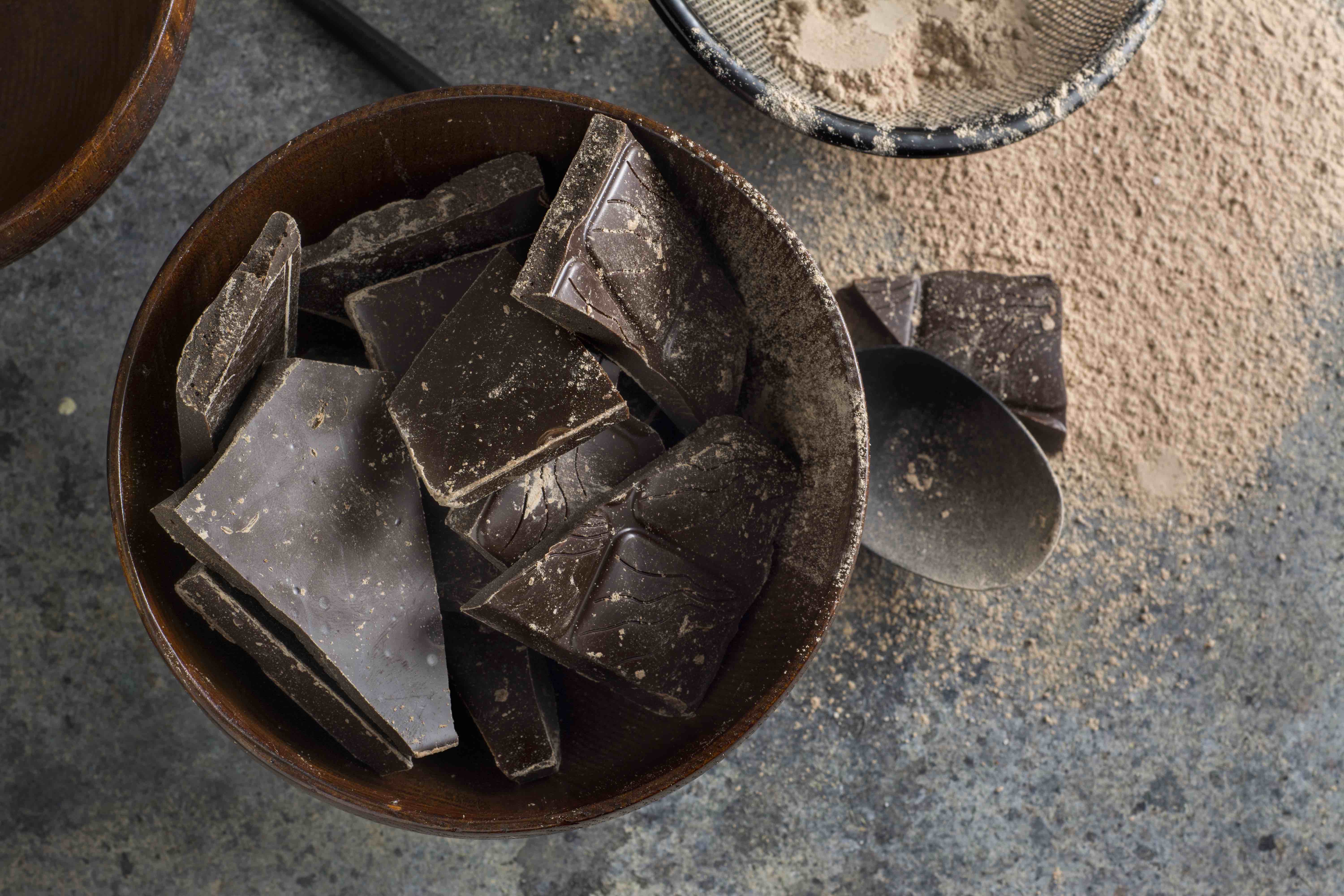
Eyesight can be enhanced by eating dark chocolate.
According to research, dark chocolate, just like carrots, can improve eyesight. Researchers found that people who eat dark chocolate experienced better eyesight. They could read small letters and notice more movements. This may be due to increased blood flow to the brain and retina.
Chocolates contain a small amount of caffeine.
Source contends that chocolate has a little amount of caffeine. This amount depends on the type of chocolate. For instance, dark chocolate has 22.7 milligrams and semi-sweet chocolate contains 17.6 milligrams.
On the other hand, a milk chocolate bar has 5.6 milligrams, while white chocolate has zero caffeine. Even though chocolate has a small amount of caffeine, it can still improve one’s mood and alertness.
Amedei Porcelana is from one of the rarest cocoa seeds.
The chocolate manufacturer from Tuscany, Itlay, Amedei produced “Amedei Porcelana.” It’s regarded as one of the most expensive chocolates in the world, and has received various awards including “Best Dark Chocolate Bar,” “Best Bean To Bar,” and the “Golden Bean Award.”
The Amedei company used Porcelana or “Maracaibo” exclusively in making a single bar of Amedei Porcelana. A 1.8 ounce of Amedie Porcelana in the USA costs $18.99 to $22.
Porcelana cacao is a cocoa with the highest quality.
Porcelana cacao, also called “Maracaibo,” is one of the rarest and precious types of Criollo. Criollo is a cacao native of South Africa. The name Porcelana comes from its white color bean. Its shell is delicate and very vulnerable to insects and fungal disease. Furthermore, Porcelana only grows in isolated places of Lake Maracaibo, Venezuela.
Godiva is a Belgian chocolatier.
In 1926, Belgian chocolatier Pierre Draps Senior founded Godiva. Pierre named his chocolate company after “Lady Godiva”, a historical person who was very generous to the church. She is known for riding her horse completely naked around the market of Coventry, Warwickshire.
Pierre opened his first Godiva shop in Grand Place in Brussels, Belgium. What began as a family business now has 600 shops in more than 100 countries in the Middle East, Asia, North America, and Europe.
Godiva still uses some of its original recipes.
As one of the most prominent chocolate companies in Belgium, Godiva creates 30 to 40 new recipes yearly. Even so, the company still continues to use the founder’s original recipe. Furthermore, Godiva has four to five chef chocolatiers who research and develop new recipes. Aside from truffles, Godiva also offers frozen drinks, soft-serve ice cream, and chocolate-dipped strawberries.
Ruth Graves Wakefield invented chocolate chip cookies by accident.
American chef Ruth Graves Wakefield invented one of the most well-known desserts in American history: the chocolate chip cookie. The invention of chocolate chip cookies was out of accident!
Wakefield planned to bake chocolate butter cookies but discovered that she ran out of unsweetened chocolate, with other sources saying she ran out of nuts instead. She altered the recipe by using Nestlé semi-sweet chocolate. To her astonishment, the chocolate did not dissolve while baking, accidentally inventing one of the most iconic recipes in history.
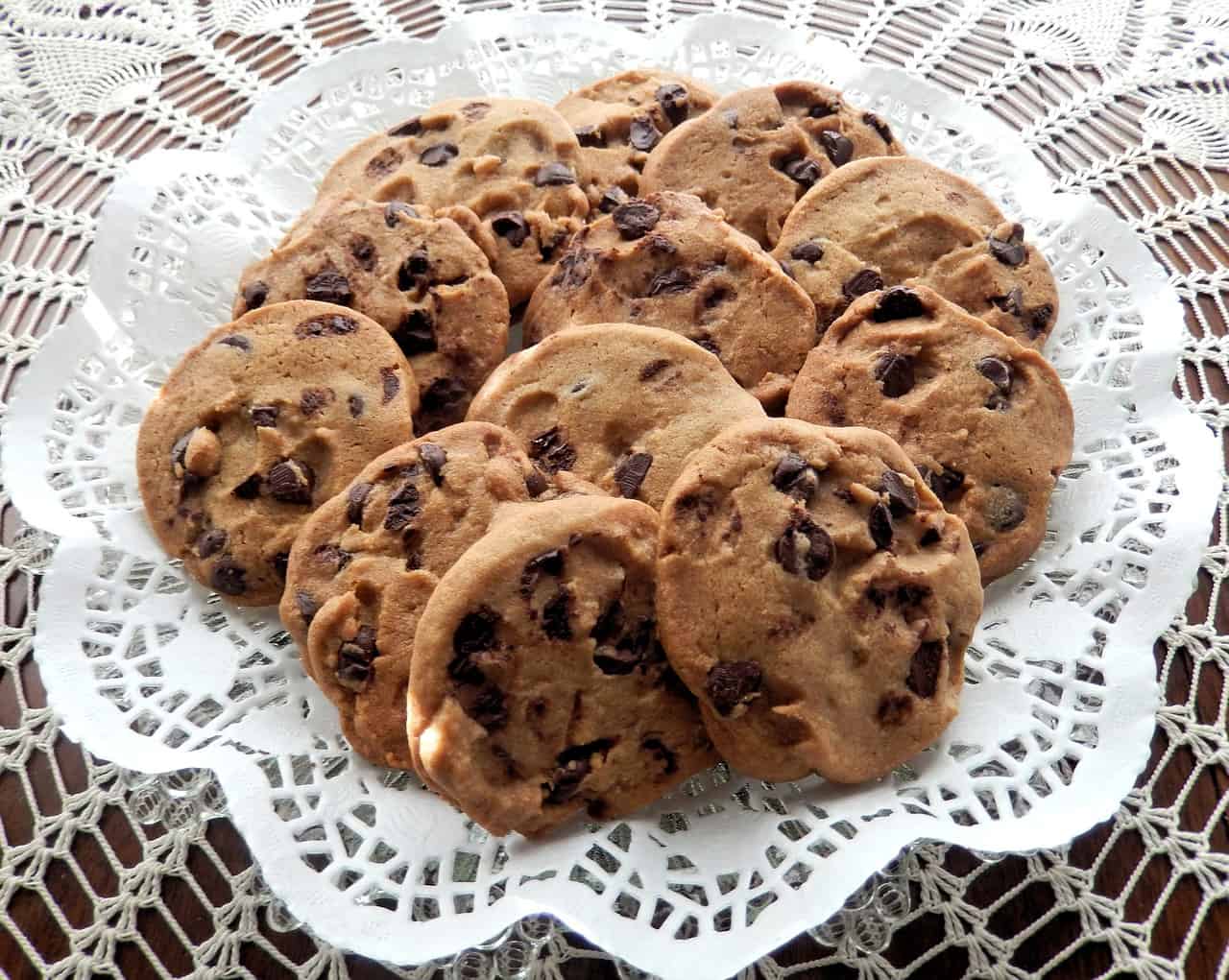
Nestlé bought Ruth Graves Wakefield's chocolate chip cookie recipe.
Wakefield ran a famous restaurant called Toll House Inn with her husband. She cooked and prepared all the food in their restaurants, including the chocolate chip cookies which became one of the most loved desserts in the inn.
As soon as Nestlé heard of the chocolate cookie craze, the company thought of bringing the cookies to a more extensive audience. Nestlé and Wakefield had a business arrangement, Wakefield sold her cookie recipe including the rights of the name, “Toll House” to Nestlé for just 1 dollar, along with a lifetime supply of chocolate chip cookies.
The largest chocolate bar weighed almost 6 tons.
British chocolate brand Thortons manufactured a giant chocolate bar with a weight of 5,827 kilograms or 12,846 pounds. The company created the chocolate bar to mark its 100th anniversary.
More than 50 workers helped to produce the 4 meters or 13.1 feet of chocolate in Derbyshire, England. Moreover, records confirmed Thortons’ chocolate beat the record of the world’s finest chocolate bar. It weighed 5,529 kilograms or 12,190 pounds.
Brussels Airport is one of the world's biggest sellers of chocolate.
The international airport in Belgium, called Brussels Airport, has one of the highest sales of chocolate in the world. It sells more than 700 tons of chocolate every year, which is around 2 tons of chocolate per day or 1.5 kilograms of sweets every minute. The airport offers a wide variety of Belgian brands like Neuhaus, Godiva, and Guylian, just to name a few.
Snickers got its name from a horse.
The American chocolate manufacturer Mars Incorporated created a chocolate bar called Snickers. In 1930, Mars introduced Snickers, named after the beloved pony of the Mars family.
Each bar of Snickers has 16 peanuts.
Have you ever wondered how many peanuts a Snickers bar has? Each bar contains 16 peanuts, that’s the most it can have! To carry on with its high demand, Mars needs to produce 15 million Snickers bars daily, and that requires about 100 tons of peanuts. In terms of sales, it is one of the best-selling products of the company, bringing in $2 billion annually.
The melting point of chocolate is between 86°F and 90°F.
The main ingredient of almost all chocolates is cocoa butter, which melts at a temperature above 30°C. That is why chocolates melt in your mouth and hand.
Chocolates’ melting point is between 86°F or 30°C, and 90°F or 32.2°C, which is lower than a normal body temperature. Once the chocolate reaches its melting point, it will be converted into liquid form.
Americans prefer chocolates as Valentine's gift.
Chocolate is truly part of every Valentine’s Day celebration. Sources reveal that Americans purchase more than 55 million pounds of chocolates seven days before Valentine’s Day.
Furthermore, about 94% of consumers would prefer to receive chocolates than flowers. Heart-shaped boxes of chocolate are the most chosen edible Valentine’s gift.
Cadbury chocolate bar is the most prized chocolate sold in the auction.
One of the most precious chocolate bars in the world is a 100-year-old Cadbury chocolate bar. This bar joined the first expedition to the Antarctic by Royal Navy officer and explorer, Captain Robert Scott. An anonymous buyer bought the chocolate bar for £470 (or $687) on September 25, 2001, in London, United Kingdom.

Lay's sold chocolate-covered potato chips.
American potato chips manufacturer Lay’s introduced its first brand chocolate-covered chip brand. It’s called Lay’s Wavy Milk Chocolate Covered Potato Chips. It was first launched in December 2013 as a limited holiday item. It is a salty-sweet combination of potato chips dipped in milk chocolate.
Forrest Mars invented M&M's.
Forrest E. Mars Sr. was inspired to develop a candy when he saw soldiers eating Smarties. Smarties is a British chocolate confectionery with hard, colored shells. These shells prevent the inner chocolate from melting.
In 1941, the production of M&M’s began at 285 Badger Avenue, New Jersey. Did you know that M&M’s first customer is the US Navy? They had seen the invention as a way for them to bring chocolates to tropical countries.
M&M's came from the name, Mars and Murrie.
The two-letter M in M&M’s came from the names of Forrest E. Mars Senior, who is the son of Mars Inc. founder, and Bruce Murrie, son of Hershey Chocolate’s president William F. R. Murrie, who had a 20% share of the product. During this time, Hershey’s only supplied Mars with the chocolate they need.
Purple was one of the original colors of M&M's.
Originally, the colors of M&M’s were purple, red, yellow, violet, green, and brown. However, in 1941, M&M’s decide to have a new color palette, thus switching purple to tan. The company kept the tan M&M until 1995, then they decided to replace tan with the color blue.
The Ghirardelli Chocolate Company is the third oldest chocolate company in the United States.
Italian chocolatier Domenico Ghirardelli founded Ghirardelli Chocolate Company in the United States. The company is under Lindt & Sprüngli, and is the country’s third oldest chocolatier.
Ghirardelli Chocolate Company is one of the few U.S. companies that have full control in all aspects of its chocolate manufacturing process.
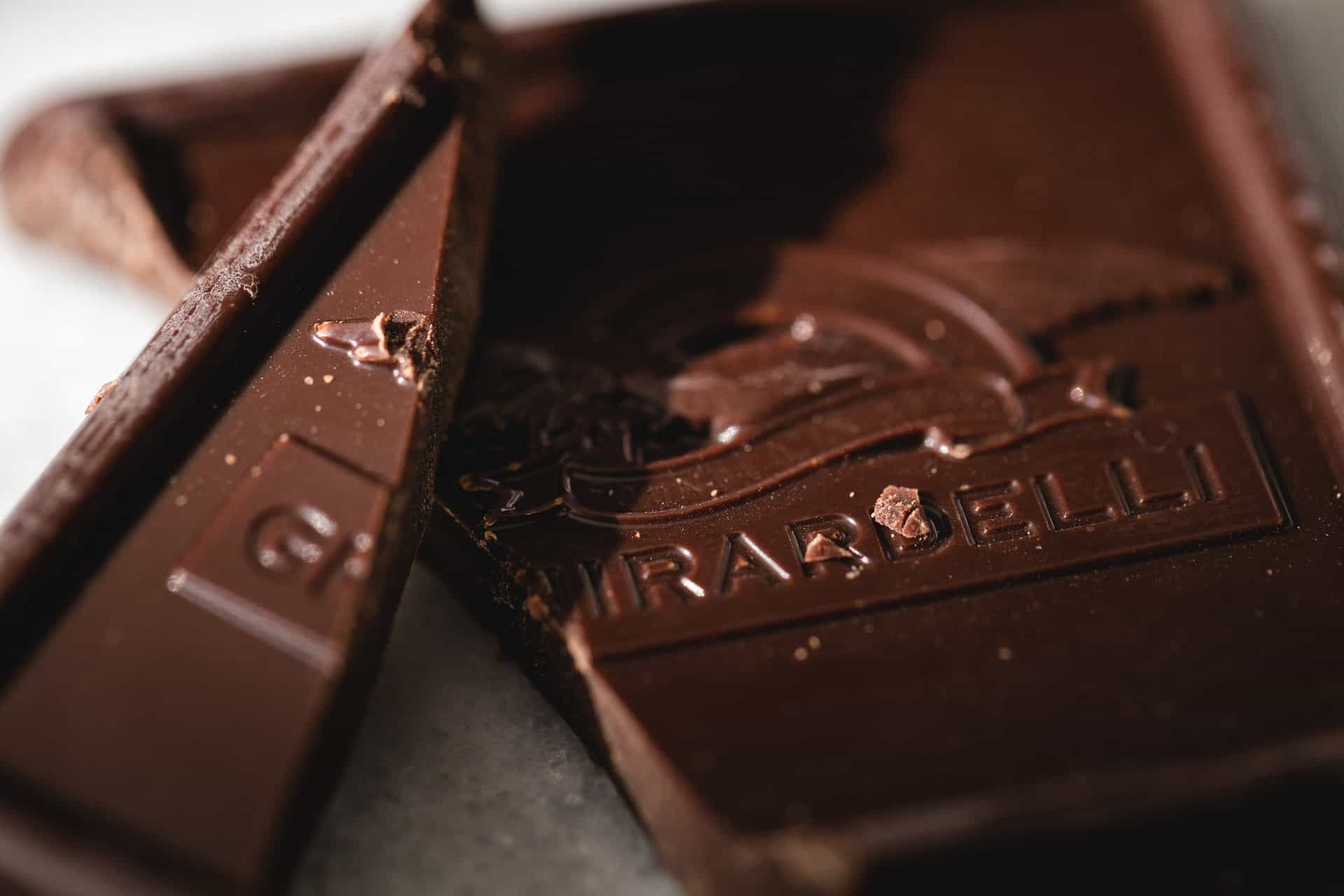
World Chocolate Day is on July 7.
World Chocolate Day, or sometimes called International World Chocolate Day, is a yearly festival of chocolate that happens worldwide every 7th of July.
The celebration began in 2009. Some people say that World Chocolate Day is to observe the introduction of chocolate in Europe in 1550.
July 28 is US National Milk Chocolate Day.
Commemorated on July 28th in the United States, National Milk Chocolate Day is one of the informal food festivals in the country. It is a day to enjoy chocolate milk of all flavors. Americans celebrate this day by treating themselves to a bar of milk chocolate.
Valrhona is one of the premium chocolates in France.
French chocolate manufacturer Valrhona has been making one of the world’s first-class chocolates in the village of Tain-l’Hermitage since 1922. Albéric Guironnet, a French pastry chef, was the founder of Valrhona. Valrhona’s product line includes confectionery, plain and flavored chocolate bars, and pellets.
Ruby chocolate is another variant of chocolate.
In 2017, Belgian-Swiss cocoa company Barry Callebaut introduced a variety of chocolate called Ruby Chocolate. It’s sometimes referred to as “Pink Chocolate.” Since 2004, the company has begun developing ruby chocolate and got its product patent in 2015. Barry Callebaut marketed ruby chocolate as the fourth type of chocolate along with milk, dark, and milk chocolate.
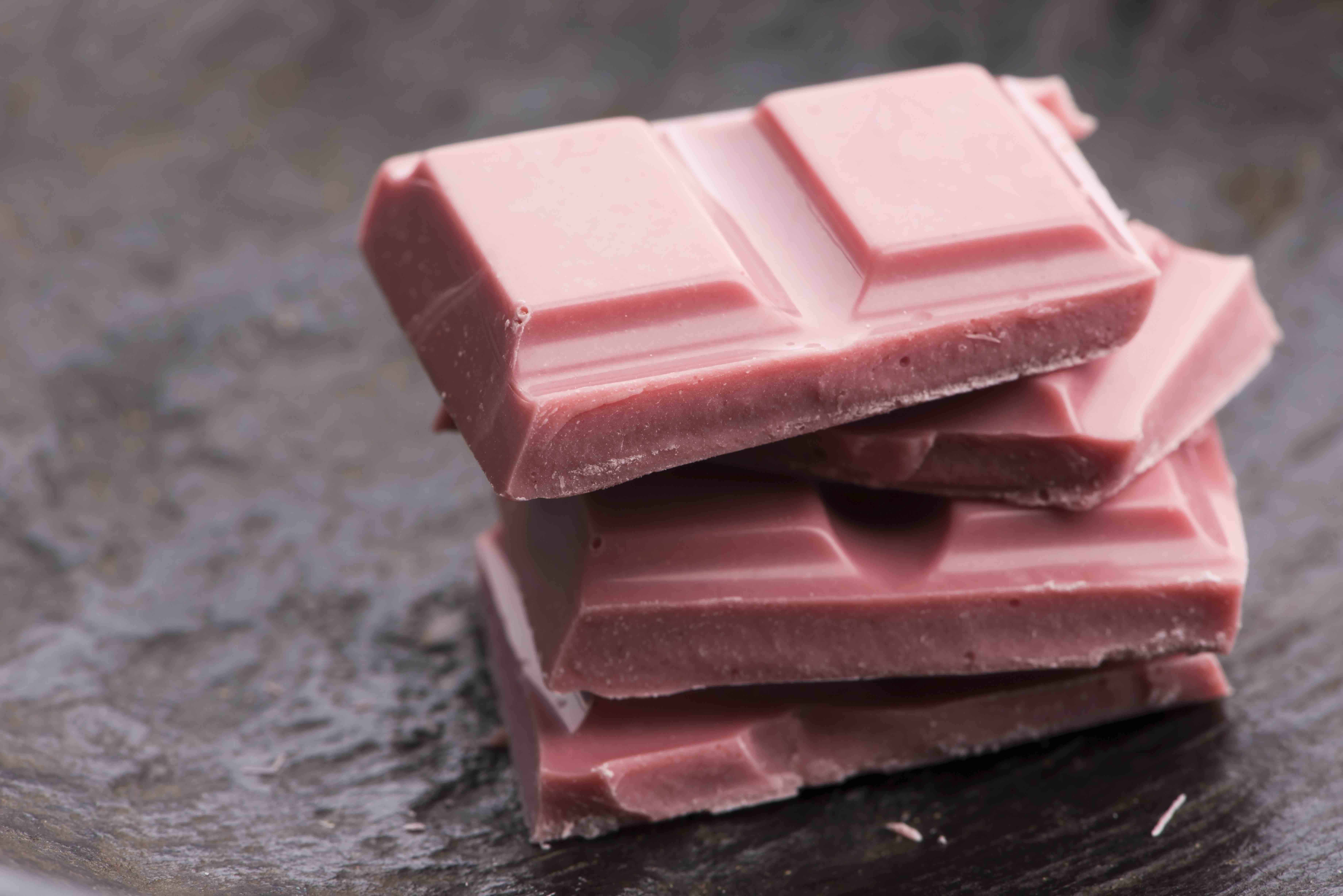
Kit Kat mass marketed the ruby chocolate.
The mass release of ruby chocolate was on January 2018. Kit Kat launched its new flavors made with ruby chocolate in South Korea and Japan. The chocolate has tart or custard and creamy flavor intensified by natural berry flavors. Upon release in Japan, one bar’s price is 400 yen or USD$3.60.
Michele Ferrero developed Nutella.
The Italian businessman and owner of Ferrero SpA, Michele Ferrero, adjusted the recipe of Gianduja paste. Gianduja is the first chocolate and hazelnut product developed by Pietro Ferrero.
He developed a more spreadable paste which he called as “Supercrema.” In 1963, Michele made improvements to the ingredients when he added vegetable oil. Later on, he renamed the paste, “Nutella.”
Nutella is from the word "nut".
The name Nutella came from the English word “nut” and the Latin suffix, ella meaning sweet. In 1964, Ferrero SpA released the first batch of Nutella. A year later, they introduced the iconic Nutella Jar. A 14-ounce jar of Nutella has about 52 hazelnuts.
The Golden speckled Egg is one of the most expensive chocolate eggs.
The Golden Speckled Egg is one of the most expensive chocolate eggs sold during an auction at the Royal Courts of Justice, in London. It cost £7,000. The Golden speckled egg took more than three days to create.
The expensive chocolate egg was made of Amedei Chocolate, edible gold leaf, and was filled with truffles. It was designed with 20 mini chocolate bars, five white flowers, and 12 smaller chocolate eggs.
Lindt launched the biggest chocolate fountain in the world.
In 2020, Lindt, a Swiss chocolatier, launched the largest chocolate fountain in the world in its museum and shop in Switzerland. The fountain is 30 feet tall or 360 inches, with 1,500 liters of real chocolate pouring into a huge Lindor truffle. In addition, the chocolate pours at a speed of 2.2 pounds per second.
Napoleon always carried chocolate with him.
Did you know that the French military and political leader Napoleon Bonaparte always took a pack of chocolate with him? During long battles, he would bring a load of chocolate and eat them to give him a boost of energy.
Drinking chocolate is one of the habits of Giacomo Casanova.
One of the tricks of the Italian adventurer and author, Giacomo Casanova is to drink a glass of chocolate milk before his romantic escapades. During his time and even nowadays, chocolates are believed to be an aphrodisiac: a substance that arouses sexual desire.
Chocolate is toxic to dogs.
Chocolates contain substances like caffeine and theobromine, a compound from cacao seeds. These are toxic to dogs. Why so? Dogs break down or digest chocolate slower than humans. Thus, chocolates may cause increased heart rate, high blood pressure, nausea, and vomiting.
Cocoa beans fight mouth bacteria and tooth decay.
Some studies claim that cocoa beans, which are the main ingredient of chocolate, fight tooth decay and mouth bacteria. Moreover, a substance found in cocoa beans can restore the lost minerals of teeth and bones. Similarly, dark chocolate contains polyphenols, nutrients from plant based-food. Polyphenols limit the oral microorganisms that cause bad breath.
Street lights in Chocolate Avenue are shaped like Hershey's Kisses.
Chocolate Avenue is a street in Hershey, Pennsylvania, known for its street lights that look like Hershey’s Kisses. Wrapped and unwrapped Hershey’s Kisses designs are alternately used in the avenue. These lovely lamps are also found at Park Avenue, Pennsylvania.
Quaker Oats financed Willy Wonka and the Chocolate Factory.
The American food manufacturer Quaker Oats financed the production of the movie, Willy Wonka and the Chocolate Factory. The movie was an adaptation of a classic children’s novel, Charlie and the Chocolate Factory. The book and film are both about a young boy named Charlie Bucket who found a ticket in a chocolate bar. The ticket gave him access to the chocolate factory ran by the enigmatic Willy Wonka.
Watch the classic 1971 version of the “Charlie and the Chocolate Factory” movie on Amazon!
Willy Wonka and the Chocolate Factory was for the promotion of Quaker Oats candy products.
Willy Wonka and the Chocolate Factory could be treated as an advertisement for Quaker Oats’ new candy line, which later on, named its products “Willy Wonka Candy Company.” The company introduced its new products, Super Skrunch bars and Peanut Butter Oompas in 1972, and Wonka Bars in 1975.
The Chocolate River in the Willy Wonka and the Chocolate Factory was made of real chocolate.
Most of the candies on set were fake, however, the chocolate river in the film was actually made of chocolate. The production used 150,000 gallons of water, cream, and chocolate. But since it was made of real ingredients, it spoiled and smelled really bad when filming ended.
Baby Ruth was first sold for only 5 cents.
Baby Ruth is a chocolate filled with chewy nougats, caramel, and peanuts. It was initially sold for only 5 cents, which was half the price of most candy bars. It quickly became one of the best-selling chocolate bars in the market.
Mr. Otto Schnering invented Baby Ruth.
Mr. Otto Schenering, the founder of Curtiss Candy Company in Chicago, Illinois, invented Baby Ruth. Originally, called Kandy Kake, the company changed its name in 1920.
Although Baby Ruth sounds like the name of the famous baseball player, Babe Ruth, the company claimed that it was named after President Grover Cleveland’s daughter, Ruth Cleveland.
Butterfinger got its name from a public contest.
Mr. Otto Schenering was also the maker of Butterfinger, and it was a follow-up to the fame of Baby Ruth. To name the product, the company manufacturing Butterfinger conducted a contest to solicit names. During this time, a broadcaster had used the word “butterfinger” to describe a player who can’t keep hold onto the ball. Even though it had nothing to with the peanut bar, a Chicago resident suggested it as the name. And the rest is history!
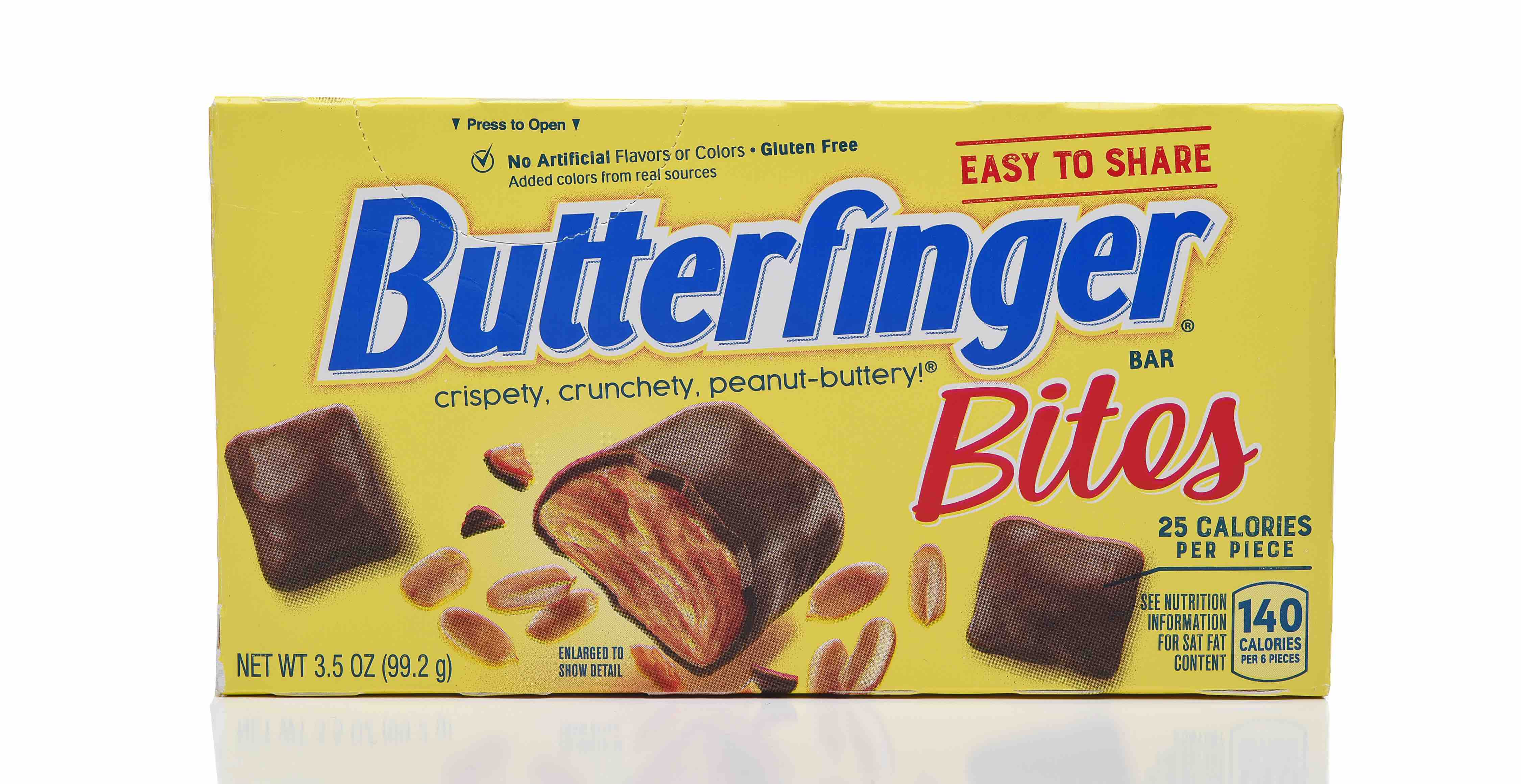
Butterfinger was introduced to the public in a grand way.
To increase the popularity of Butterfinger, the company dropped Butterfingers from airplanes across U.S. cities as part of its marketing campaign. This was the same advertising strategy used for Baby Ruth in 1923. Aside from boosting the reputation of Baby Ruth and Butterfinger, it was also the company’s way to compete with other chocolate bars in the market.
Neuhaus is a notable Belgian chocolate company.
In 1857, Swiss immigrant Jean Neuhaus founded Neuhaus in central Brussels, Belgium. Neuhaus is a well-known chocolatier that produces and sells chocolate truffles, biscuits, and ice cream. Not only that, the company is also notable for its praline, a chocolate shell candy filled with chocolate cream.
The largest chocolate structure is in Brazil.
The largest chocolate structure has a weight of 10,488 kilograms or 23,122.08 pounds, and it is located in Uberaba, Minas Gerais, Brazil. It holds a title in the Guinness World Records. The record-breaking sculpture, including all the things inside it such as its stove, jars, pens, typewriters, chairs, and other items were all made of chocolate.

Meiji is Japan's pride of confectionery.
Meiji Dairies Corporation is a Japanese food company established in 1917, and situated in Tokyo. It was consequently renamed Meiji Co., Ltd on March 31, 2011. Aside from chocolate products, the company also offers milk, ice cream, sports drinks, pizza, cheese, and food supplements.
Meiji "The Chocolate" follows the "Bean to Bar" concept.
Launched in September 2016, “The Chocolate” of Meiji Holdings Company Ltd, became an instant hit in Japan. It is one of a kind chocolate bar that observes the “bean to bar” idea. The company does, everything, from growing cacao trees, processing the chocolate, everything need to turn them into marketable chocolates.
Japanese women give men chocolates on Valentine's Day.
Valentine’s Day in Japan is a little different. Instead of men giving girls gifts, it’s the Japanese girls who give guys chocolates. They don’t just give men for whom they have passionate feelings, but also to male members of the family and even co-workers. In parallel, Japanese women present them “giri choco” —”giri” means obligation, while “choco” means chocolate.
Ration D Bar had been part of military food rations.
Ration D Bar was a bar of famous chocolate from the military. The chocolate bar was part of their ration, not as a treat, but for their survival. Ration D Bar weighed 4 ounces; should not melt at high temperature, and must NOT taste good so that soldiers will refrain from consuming the chocolate in non-emergency situations.
The blood in the Psycho shower scene was real chocolate.
One of the most unforgettable scenes in the American thriller film Psycho was the shower scene. The “blood” in that scene was actually chocolate. Some say that the chocolate used was Bosco chocolate syrup, while others say it was Hershey’s chocolate syrup, no matter what they used, it cannot be denied that the blood in the scene was real chocolate.
Nazis planned to kill Sir Winston Churchill with a bar of exploding chocolate.
The German political power, Nazis, devised a bomb made of thin steel covered with real chocolate. It explodes once a chunk was broken. They planted the bomb in an effort to assassinate then Prime Minister of the United Kingdom, Winston Churchill. Luckily, the British Allies discovered the plan of the Nazis and prevented the explosion of the chocolate bomb.
About 73% of chocolate eaters in the UK prefer plain milk chocolate.
Plain milk chocolate is one of the most favorite types of chocolate among he British. Around 73% of chocolate eaters in the United Kingdom prefer to have plain milk chocolate, while 49% of chocolate lovers choose flavored chocolates like orange-flavored, ginger, or those with raisins or nuts.
Brits eat an average of 660,900 tons of chocolate yearly.
The British are very fond of eating chocolates. In fact, they consume an estimated 660,900 tons of chocolate annually, which is approximately 11 kilograms per person yearly. Based on 2017 records, Britain consumed the most chocolate than any country in the world.
90 million lbs of chocolate are sold on Halloween in the US.
Trick or treat is a Halloween custom for children and adults worldwide. The United States alone purchases about 90 million pounds of chocolates for Halloween, incredibly higher than any other holiday. Approximately $1.2 billion is spent by the country on chocolate while $680 million is spent on sugar candy.
Chocolate does not cause acne.
Contrary to what most people believe, eating chocolate has no concrete evidence that it can cause acne or a pimple breakout. It also does not totally mean that it does not contribute to the occurrence of pimples or acne. Most likely, the sugar content of the chocolate is the culprit, not the cocoa.
Benjamin Franklin sold chocolate in his printing shop.
Would you believe that chocolate was part of Benjamin Franklin’s business? One of the Founding Fathers of the United States, Benjamin Franklin used to sell chocolate in his printing shop in Philadelphia. Aside from chocolates, he also sold Christian-related books and stationery supplies.
The world's biggest "rabbit chocolate" weighs 4,245.5 kg.
The biggest rabbit chocolate was in Brazil, and it officially set a title in the Guinness World Record on February 25, 2017. It took nine professionals, who worked for 8 consecutive days, to build a 9,359.7 pound rabbit. The chocolate rabbit was 4,52 m high, 2,11 wide, and 1,76 m long.
Sweet Shop USA holds the record for the largest chocolate truffle.
Sweet Shop, a chocolate manufacturer in the USA, took a spot in the Guinness Book Of World Records with their biggest chocolate truffle. It weighs 1,074.33 kilograms, measures 12 feet, 2 inches in diameter, and 3 feet 5 inches tall. The previous record was 1,768 pounds and 2 ounces. It was achieved in Italy in 2012.
Reese’s Peanut Butter Cup is one of the leading brands of Hershey.
Reese’s Peanut Butter Cup is an American chocolate candy filled with peanut butter and sold by the Hershey company. It is also the leading brand of Hershey, with an annual sale of $2 billion.
Throughout time, Reese’s Peanut Butter Cup has grown its variation, from different chocolate coating, sizes, and even packaging that celebrate and honor seasonal holidays.
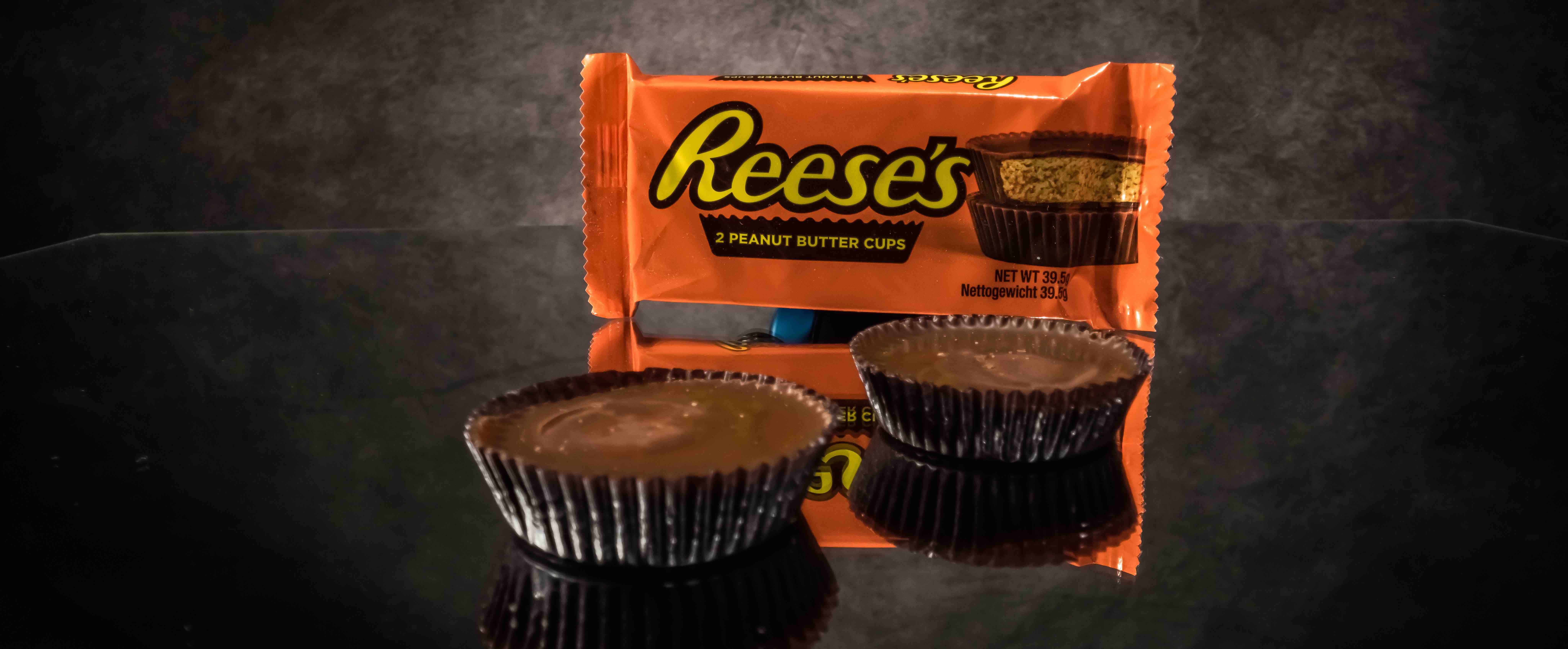
H. B. Reese developed Reese's Peanut Butter Cup.
American inventor and businessman Harry Burnett “H. B.” Reese invented Reese’s Peanut Butter Cup on November 15, 1928. He used to work as a dairy farmer for Milton S. Hershey. But then, he left Hershey to built his own candy company called The H.B. Reese Candy Company, established in 1923.
Penny Cups was the original name of Reese's Peanut Butter Cup.
When Harry Reese released Reese’s Peanut Butter Cups, there were no extravagant promotion ads. The peanut butter cups were packed in a 5-pound bag of assorted candies. It was first called “Penny Cups” because each cup only cost one cent during that time.
Clark Bar was one of the earliest chocolate bars in the US.
Clark Bar is close to the well-known Butterfinger. It has crunchy peanut butter and a caramel center covered by milk chocolate. It was the first American “combination” candy bar that had been successful nationwide. Irish-born candy salesman David L. Clark created the Clark Bar in 1917.
Goo Goo Cluster is the first candy bar that contains different types of candy.
First created in 1921, the Goo Goo Cluster is a round shape chocolate candy that has caramel, marshmallow, roasted peanuts, and nougat all covered in milk chocolate. It’s the first candy bar that contains more than one candy. During the invention of Goo Goo Cluster, packaging machinery was not yet available, thus the candies were sold unpackaged.
There's a difference between chocolate liquor and liqueur.
Chocolate liquor is made of cocoa nibs, or small pieces of crushed cocoa beans turned into a dark, thick paste. In spite of its name, chocolate liquor does not contain alcohol. Meanwhile, a chocolate liqueur is a mixture of alcoholic drinks like whiskey or vodka and chocolate.
Percy Spencer's inspiration in making a microwave was melted chocolate.
While testing magnetrons, high-powered vacuum tubes inside radars and microwaves, the American self-taught engineer Percy Spencer noticed that the chocolate in his pocket had melted. With this, he thought that magnetrons could heat food quickly. Shortly after, the microwave was developed.
70% of commuters in London would give their password in exchange for a bar of chocolate.
Back in the early 2000s, when hackers were not that rampant, a survey showed that 70% of London commuters would reveal their computer passwords in exchange for a chocolate bar. In the same survey, 30% of the respondents said that they would give their password even without a chocolate bar.
Canadian children once held a candy bar protest.
On April 25, 1947, Canadian children went on protest over the price increase of chocolate bars from five to eight cents. They protested for three noon hours while holding a slogan which read, “Don’t be a sucker.”
Fruits also go well with chocolates.
Fruits eaten with chocolate are already an acknowledged fact. Throughout the years, fruits like strawberries and bananas have been paired with chocolate.
But do you know that watermelon and chocolate are also a perfect match? A slice of watermelon dipped in chocolate liquid and sprinkled with a little salt is also a must-try dessert. Tasty chocolate facts!

M&M's is the first chocolate candy in space.
On April 12, 1981, M&M’s or “candy-coated chocolates,” as called by National Aeronautics and Space Administration (NASA) made its first space exploration. NASA had to rename the candy in observance of their policy not to endorse any goods or services.
Chocolate easily absorbs other odors and flavors.
Chocolates quickly absorb fat-soluble chemicals. These are chemicals that easily dissolve in oil or fats found in fish, cheese, and meat. Remember these chocolate facts when storing them!
An opened chocolate can last for 6 to 8 months.
Dark chocolate lasts longer than milk and white chocolate because of its lack of dairy content. Unopened dark chocolate may last for two years, while opened dark chocolate lasts for one year. As for milk chocolate, it can last a year when unopened and six to eight months when opened and kept properly.
Was this page helpful?
Our commitment to delivering trustworthy and engaging content is at the heart of what we do. Each fact on our site is contributed by real users like you, bringing a wealth of diverse insights and information. To ensure the highest standards of accuracy and reliability, our dedicated editors meticulously review each submission. This process guarantees that the facts we share are not only fascinating but also credible. Trust in our commitment to quality and authenticity as you explore and learn with us.


